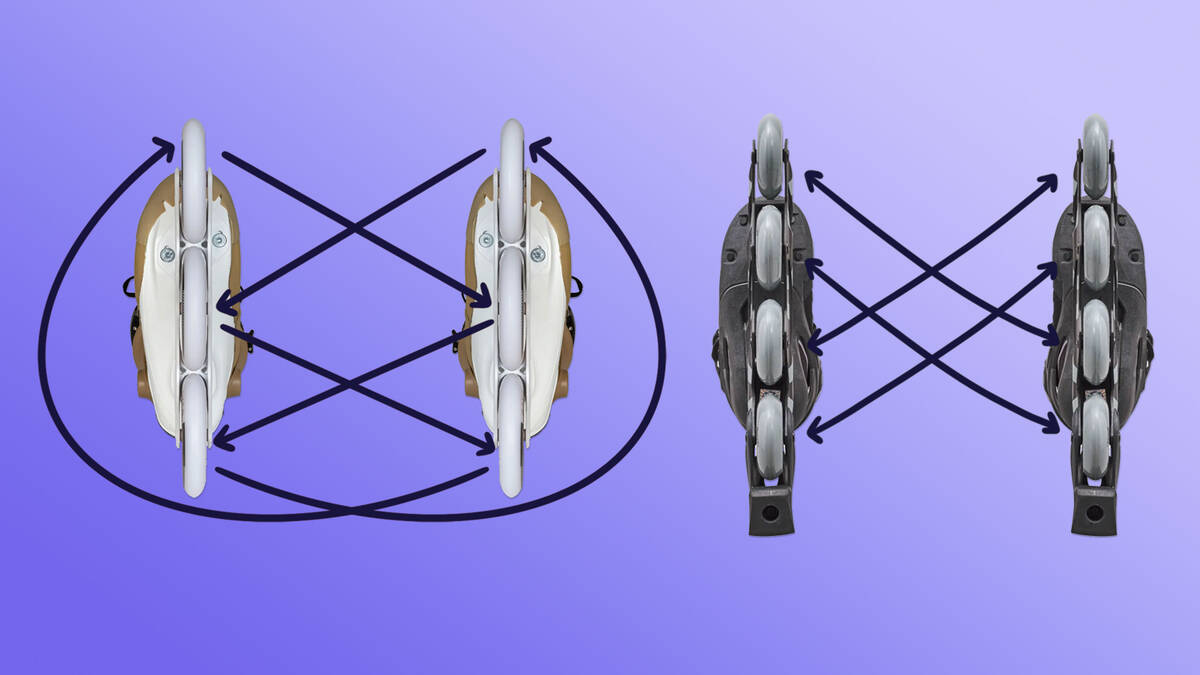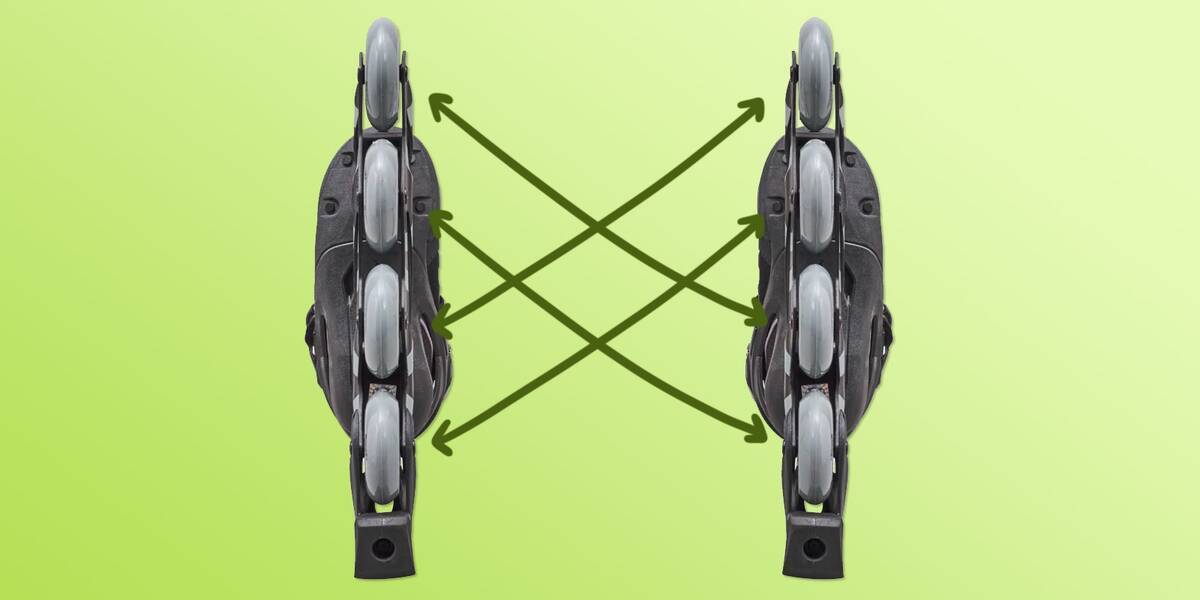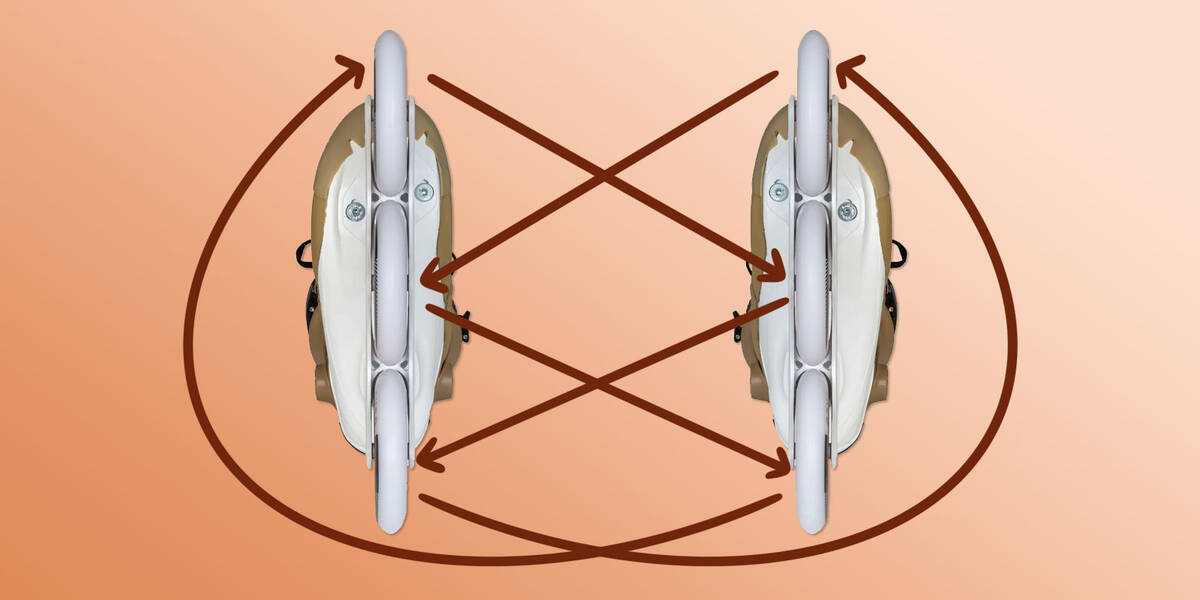Guidelines for Changing Wheel Positions on Inline Skates

This manual will instruct you on the process of changing wheel positions on inline skates, whether they are equipped with 3 or 4 wheels. It's common for the front and back wheels to wear down more quickly compared to the middle ones, with varying wear patterns on the right and left skates. By correctly rearranging the wheel positions, your wheel setup can remain flat, thereby prolonging the wheels' life.
These guidelines offer straightforward yet effective methods for preserving a flat wheel setup and extending wheel longevity. Though numerous techniques exist for altering wheel positions on inline skates, as you enhance your skills and refine methods, you'll likely establish your own preferences.
Overview
Changing Wheel Positions on 4-Wheel Inline Skates

The most frequently used technique for rearranging the wheels on 4-wheel inline skates involves switching the two back wheels on one skate with the two front wheels on the other skate, as depicted in the above illustration.
You might find it helpful to affix a small piece of masking tape to each wheel, marking its initial position to avoid any mix-ups during the process.
Original wheel placements:
| Left skate | Right skate |
| 1 Left | 1 Right |
| 2 Left | 2 Right |
| 3 Left | 3 Right |
| 4 Left | 4 Right |
Wheel placements after repositioning:
| Left skate | Right skate |
| 3 Right | 3 Left |
| 4 Right | 4 Left |
| 1 Right | 1 Left |
| 2 Right | 2 Left |
- Note: Ensure each wheel is flipped. If the designs were facing outwards initially, they should face inwards when placed back.
Changing Wheel Positions on 3-Wheel Inline Skates

An effective way of repositioning wheel locations on 3-wheel inline skates is illustrated above. The aim is to distribute wear equally across all six wheels, resulting in an extended wheel life.
Numerous methods exist for rearranging wheels on 3-wheel skates. For newcomers to triskates, the rotation pattern outlined below is a good starting point.
To prevent any confusion, you might want to adhere a tiny piece of masking tape to each wheel, marking their original positions.
Original wheel placements:
| Left skate | Right skate |
| 1 Left | 1 Right |
| 2 Left | 2 Right |
| 3 Left | 3 Right |
Wheel placements after repositioning:
| Left skate | Right skate |
| 3 Right | 3 Left |
| 1 Right | 1 Left |
| 2 Right | 2 Left |
- Note: Ensure each wheel is flipped. If the designs were facing outwards initially, they should face inwards when placed back.
Essential Tools for Changing Inline Skate Wheels
A 4 mm Allen key or Torx tool will be necessary for removing and reattaching the wheels. You'll often need two of these keys—one for each side of the wheel—to securely hold both the male and female components of the wheel bolts.
The usefulness of skate tools cannot be overstated, as they normally possess all the equipment needed for skate assembly and disassembly. Get one here:
Discover how to detach inline wheels with this resource:
When Should Inline Skate Wheels Be Rotated?
The frequency of wheel rotation largely depends on your skating habits, terrain, and methodology.
You'll notice it's time to change wheel positions when the middle line starts to drift from the centre. For some, this may entail rearranging wheels after each skating session, whereas for others, doing so a few times per season might suffice.
Once accustomed to the procedure, rotating your wheels should only take about five minutes.
If you're contemplating whether it's time for new wheels or skates, the following guide may assist you:
